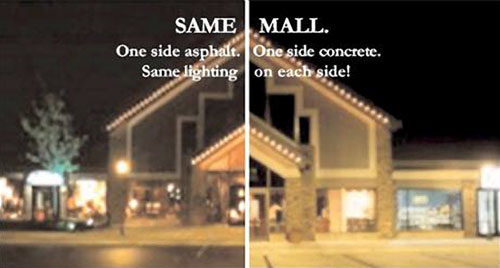Concrete Masonry in Green Buildings
Innovations and Other Considerations
Recognizing the need to allow for creativity and innovation in green buildings, LEED and other rating systems allow for designers to demonstrate specific ways that a building can excel and provide more than the minimum level of performance related to green building criteria. One of the ways to demonstrate long term high performance is to prepare a Life Cycle Analysis (LCA) on the building and the systems within it. Materials that provide long term durability, do not need replacement in 10 or 20 years, have low maintenance requirements, and contribute to the long term thermal performance of a building will typically demonstrate a lower total life cycle cost compared to other materials that do not possess these traits. Hence, since CMUs have been shown to embody all of these characteristics, it will readily help a building demonstrate an overall positive life cycle analysis.
Of course, most owners are interested in first costs as well as long term costs. Appropriately addressing this question is a matter of identifying what a comparison is being made against. Conventional wood framed or light gauge steel construction has typically been found to be the least expensive means of construction, but does not have the same qualities and characteristics of concrete masonry buildings. Nonetheless, in some cases, the first cost difference between CMUs and these conventional framing systems can actually be negligible or only slightly more in the overall building cost since there are savings in finishing and other work. Pre-cast or poured in place concrete construction is typically more expensive than all of these, even with the use of insulated concrete forms (ICF) systems. Further, since some concrete masonry can be fashioned with the appearance of large sized brick, it can provide a desired appearance with less labor cost than clay masonry construction. In many cases, then, CMU compares favorably in first costs as well as long term costs.
In terms of innovations in the use of materials, the color and reflectivity of CMUs is a particularly good place to look. Using light colored, high albedo concrete pavers will help reduce heat island effect as discussed earlier. However at night, they will reflect artificial light too which can lead to lower outdoor lighting costs. Similarly, these reflective pavers can help reflect desired daylight into a space during the day thus contributing to the use of day-lighting and lowering electric lighting costs during the day as well.
 |
Highly reflective concrete masonry paving reduces the need for outdoor lighting and can lower energy costs at the same time. Photos courtesy of Oldcastle® Architectural |
Conclusion
As all of the above has shown, green building design and CMU construction are naturally compatible and completely consistent with each other. Concrete masonry pavers make distinct community design statements that can also allow stormwater to permeate through and reflect back unwanted heat from the sun. CMU walls that allow for continuous insulation and add thermal mass contribute to optimizing the energy performance of a building while incorporating passive solar design principles allows for on-site renewable solar energy to be harvested. As a durable, fire resistant, and low maintenance material, CMUs can also be re-used and recycled for long term environmental contributions. Indoors, CMUs can help eliminate mold, VOCs, and unwanted sound. From a cost standpoint, it performs favorably in first cost and life cycle costs. With all of these naturally green attributes, it is easy to see why concrete masonry has endured for so long and is just as likely to continue on well into the future.
 |
Oldcastle® Architectural is a leading supplier of innovative and sustainable masonry and hardscape products for North America’s building and landscaping markets. Oldcastle Architectural is the innovator behind many of the industry’s well-known brands including Glen Gery®, Trenwyth™ masonry products, the EnduraMax High-Performance Wall System™ and Belgard® Hardscapes among others. Oldcastle Architectural is a division of Oldcastle Building Products™, a subsidiary of Oldcastle®, Inc. For more information, call (855) 346-2766 or visit www.oldcastlearchitectural.com |








